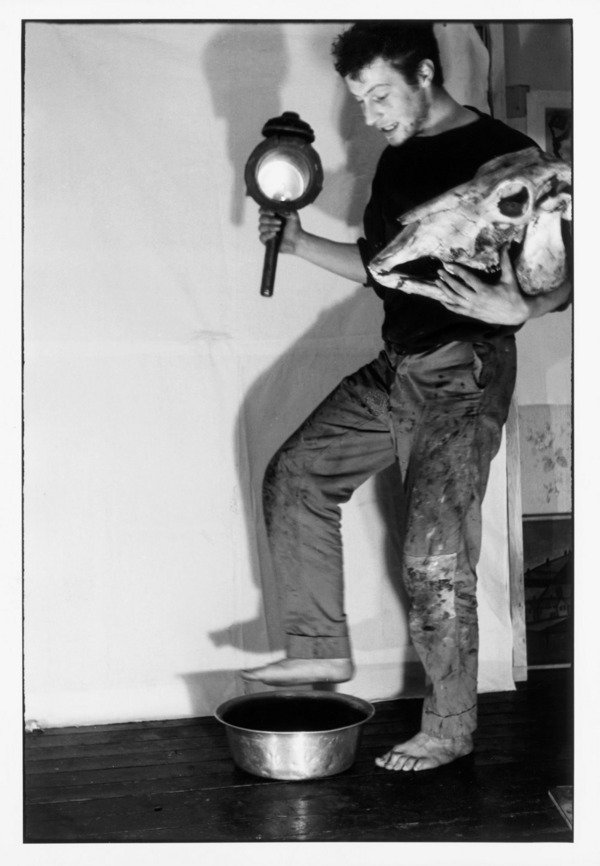Franz Erhard Walther
dal 24/5/2012 al 8/9/2012
Segnalato da
24/5/2012
Franz Erhard Walther
ZKM_Center for Art and Media, Karlsruhe
Space through Action. Participative object and textile sculpture formulated an offer to the observer to 'use' the artwork, to 'unfold' the sculpture and to rearrange it. The exhibition features a large part of Franz Erhard Walther's 'Stride Plinthes' accompanied by the complete series of 'Stand Pieces' that are presented for the first time.

curated by Peter Weibel and Andreas F. Beitin
To actively integrate into the sculptural artwork the observer, who is
otherwise condemned to mere contemplation – this was
fundamentally new when Franz Erhard Walther first established it in
his work of the 1960s. Participative object and textile sculpture
formulated an offer to the observer to “use” the artwork, to “unfold”
the sculpture and to rearrange it. With this, Walther has subjected
the understanding of art and the relationship between art and its
recipient to a fundamental re-evaluation and amplification. Today he
is unquestionably one of the most influential artists of recent
decades. Scarcely any other artist has been able to change the
definition of what sculpture can be with such foresight and
consequence as Walther has done.
The ZKM | Museum of Contemporary Art is now showing, in the
context of this year’s main exhibition theme of performativity, a
large part of Franz Erhard Walther’s “Stride Plinthes” accompanied
by the complete series of “Stand Pieces” that are presented for the
first time.
Already in his early photographic works at the end of the 1950s, Franz
Erhard Walther began to further the discourse on the definition of
sculpture set forth by Marcel Duchamp. The relationship between art,
artist, and observer shifted into the focus of artistic creation and the role
of the art consumer was questioned by inviting their interaction. Long
before artists such as Bruce Nauman, among others, used their own
bodies as a sculptural medium, Walther has already put himself and the
audience into the work as sculptural “material.”
After completing his studies at K. O. Götz, Franz Erhard Walther set out
in 1967 for New York. Just two years later, at an exhibition in New York’s
MoMA, he showed his legendary “1. Werksatz” – a 58-part work, that
today belongs to the museum’s collection. The exhibition visitor was
given the possibility of using the works: these could be unfolded, newly
arranged according to the visitors’ ideas, organized among several
visitors, or stretched out. According to this basic concept, the first
publication by Franz Erhard Walther was titled “OBJEKTE, benutzen
(objects, use)” (1968). The book, long out of print, will be republished in a
new edition on the occasion of the exhibition at ZKM | Museum of
Contemporary Art.
The active engagement with an artistic offer, experiencing haptics of
fabrics and materials, the responsiveness of one’s own physicality and
the resulting action in the room are some of the reasons that Franz
Erhard Walther’s work is still today an extraordinary contribution to
contemporary art. His work can be seen as a synthesis of Process art,
Minimal art, and Conceptual art and stands in dialogue with numerous
prominent positions within contemporary art.
Image:“Attempt to be a sculpture”, 1958. photographs at the working area, Fulda, Wallweg 28, 1958 © VG Bild-Kunst 2012/ Franz Erhard Walther, photo: Egon Halbleib
Press Contact
Dominika Szope
Head of Department Press and
Public Relations
Tel: 0721 / 8100 – 1220
Denise Rothdiener
Press Assistant
Tel: 0721 / 8100 – 1821
E-Mail: presse@zkm.de
www.zkm.de/presse
Opening: Fri, May 25, 2012, 7 p.m.
ZKM_Center for Art and Media
Lorenzstrasse 19 - Karlsruhe
Mon, Tue closed | Wed − Fri 10am−6pm, Sat − Sun 11am−6pm



